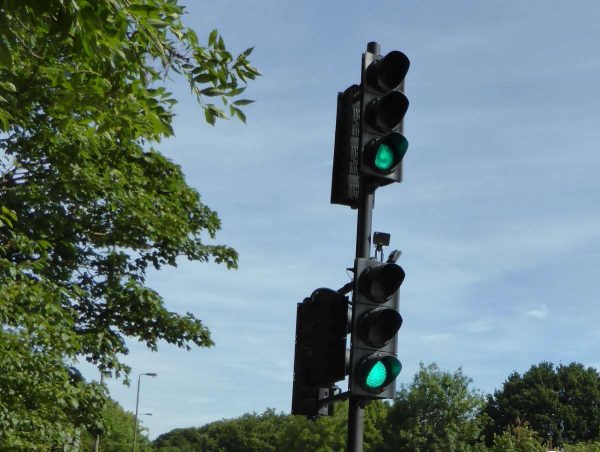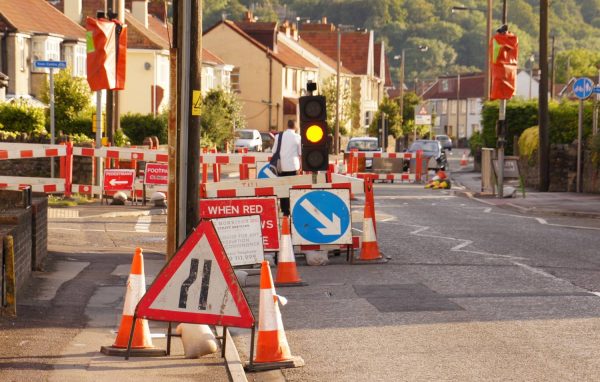The UK’s traffic light colours conform to the international norm of red, yellow (amber) and green, but their phasing is different from some other countries.
What is the traffic light phase or cycle?
Lights go from red to red and amber to green to amber and back to red. If there are green filter arrows to the left or right then they could appear at any time when the red light is on to allow traffic to flow in that direction.
The traffic light cycle




What do the traffic light colours mean?
- A red traffic light means stop at or behind the white line (or where otherwise indicated). The white line is positioned so that pedestrians have room to cross in front of the waiting vehicles without becoming an obstacle to traffic travelling across the junction. The only time you can go through a red light is if a police officer directs you to do so.
- A red and amber light together still means stop – don’t pass through it until green shows. Red plus amber has a phase of 2 seconds +/- 0.25s
- An amber light means stop if you are able to. Amber lights have a fixed phase of 3 seconds +/- 0.25s.
- A flashing amber light is shown at a pedestrian crossing. It means you can go if it’s safe to do so (i.e. there are no pedestrians still crossing)
- A green light means go if it is safe to do so (i.e. there are not pedestrians crossing) and there is space for your vehicle on the other side of the junction.
- If the lights are out, proceed with caution as nobody has the right-of-way.


All-red phase
There are two occasions when every driver will have a red light:
- Just after one of the lights goes green – this gives enough time for vehicles to clear the intersection
- If pedestrians are crossing in all directions on their own dedicated phase.
Cap visors
Cap visors are circular shields that surround the traffic lights and prevent drivers viewing the lights’ colours from the side. This avoids confusion. It also makes the lights seem brighter in strong sunlight.
Improving your fuel economy by anticipating traffic light phases
If a light is green in the distance it’s likely that it will turn red before you get there, and vice versa. Knowing the phasing means you can use anticipation to judge your speed so that you can
- stop safely for amber lights
- make a prediction when lights are going to change to red
- make a prediction when lights are going to change to green
These help you improve your fuel economy by braking more gently or maintaining your momentum so you arrive at the light as it turns green.
Temporary lights at road works
If there are roadworks while block one lane temporary lights might be installed. If these are near other traffic lights and the temporary lights override that phase, the existing lights will be covered, as shown in the photo below.

